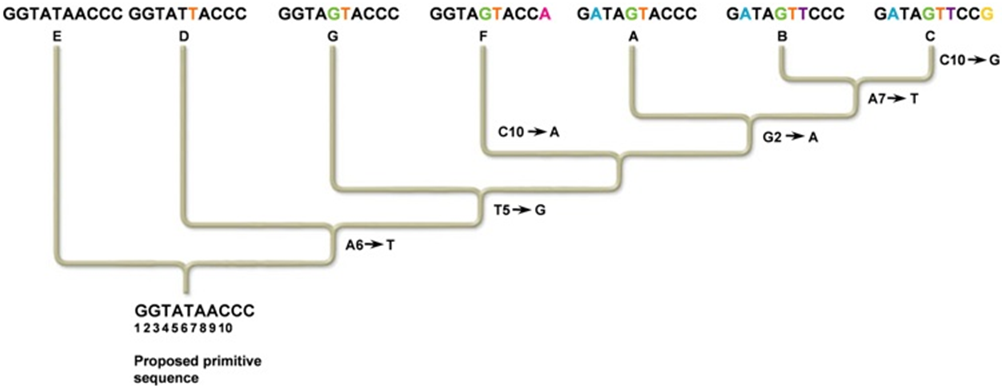The only endocrine gland whose secretory function is under direct control by sympathetic nerves is the
a. pancreas.
b. thyroid.
c. adrenal medulla.
d. thymus.
e. testis.
C
You might also like to view...
What nucleotide change is a shared derived character for species A, B, and C, but not for species G?
Note: A,T,G, and C refer to nucleotide bases, and the numbers refer to the position of the base in the nucleotide sequences. For example, A6 refers to an adenine at the sixth position.

A. Changing the second G to an A is common to species A, B, and C, but not to species G.
B. Changing the fifth T to a G is common to species A, B, and C, but not to species G.
C. Changing the second G to a T is common to species A, B, and C, but not to species G.
D. Changing the second G to an A and the fifth T to a G is common to species A, B, and C, but not to species G.
E. None of these show a change in derived characteristics for A, B, and C that are not found in G.
Many species of ants "farm" aphids, protecting them from predation and collecting concentrated sugars (i.e. honeydew) from them. This type of ant/aphid relationship is known as
A. dispersive mutualism. B. defensive mutualism. C. parasitism. D. trophic mutualism. E. commensalism.
Intermediate filaments
A) guide the movements of chromosomes.
B) surround the nucleus.
C) guide the movements of organelles.
D) support the inner mitochondrial membrane.
Bacteriochlorophyll a absorbs ________ light
A) 350 nm, ultraviolet B) 425 nm, violet C) 660 nm, red D) both 425 & 660 nm (violet and red) E) all visible